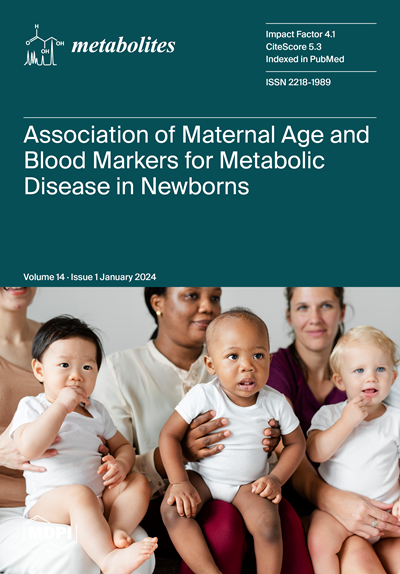身体脂肪指数与鲁氏胃旁路术后 6 个月逆转代谢不健康肥胖的关系
IF 3.7
3区 生物学
Q2 BIOCHEMISTRY & MOLECULAR BIOLOGY
引用次数: 0
摘要
决定鲁式胃旁路术(RYGB)后代谢不健康肥胖(MUO)向代谢健康肥胖(MHO)逆转的因素尚未完全阐明。本研究旨在根据 RYGB 术前和术后 6 个月的代谢表型,通过不同指数评估身体脂肪含量和分布,以及这些指数与 MUO 向 MHO 过渡之间的关系。本研究报告了一项前瞻性纵向研究,研究对象是在 RYGB 术前(T0)和术后 6 个月(T1)接受评估的成人肥胖症患者。对体重、身高、腰围 (WC)、体重指数 (BMI)、腰高比 (WHR)、总胆固醇 (TC)、高密度脂蛋白胆固醇 (HDL-c)、低密度脂蛋白胆固醇 (LDL-c)、甘油三酯、胰岛素、血糖、HbA1c 和 HOMA-IR 进行了评估。还计算了内脏脂肪指数(VAI)、圆锥指数(CI)、脂质堆积乘积(LAP)、CUN-BAE 和体形指数(ABSI)。根据胰岛素抵抗对 MUO 进行分类。T0时为MUO,T1时转变为MHO的为MHO-t组,T0和T1时均为MUO的分别为MHO-m组和MUO-m组。在 T0 时,62 人中有 37.3% 被归类为 MHO,62.7% 被归类为 MUO。与 MHO-T0 组相比,MUO-T0 组的血糖、HbA1c、HOMA-IR、胰岛素、总胆固醇和低密度脂蛋白胆固醇均较高。两组在 T1 阶段的生化指标和身体变量均有明显改善。RYGB 治疗后,89.2% 的 MUO-T0 变成了 MHO(MHO-t)。与 MHO-m 组和 MHO-t 组相比,MUO-m 组的 HOMA-IR、胰岛素和 VAI 均较高。在 MHO-t 组和 MHO-m 组,T0 时的 CI 和 ABSI 与 T1 时的 HOMA-IR 相关。CI和ABSI作为内脏脂肪的指标,有望预测RYGB术后代谢改善的情况。还需要更多的研究来证实 MUO 逆转的可持续性及其与这些指标的关系。本文章由计算机程序翻译,如有差异,请以英文原文为准。
Relationship between Body Adiposity Indices and Reversal of Metabolically Unhealthy Obesity 6 Months after Roux-en-Y Gastric Bypass
The factors determining the reversal of metabolically unhealthy obesity (MUO) to metabolically healthy obesity (MHO) after Roux-en-Y gastric bypass (RYGB) are not completely elucidated. The present study aims to evaluate body adiposity and distribution, through different indices, according to metabolic phenotypes before and 6 months after RYGB, and the relationship between these indices and transition from MUO to MHO. This study reports a prospective longitudinal study on adults with obesity who were evaluated before (T0) and 6 months (T1) after RYGB. Bodyweight, height, waist circumference (WC), BMI, waist-to-height ratio (WHR), total cholesterol (TC), HDL-c, LDL-c, triglycerides, insulin, glucose, HbA1c and HOMA-IR were evaluated. The visceral adiposity index (VAI), the conicity index (CI), the lipid accumulation product (LAP), CUN-BAE and body shape index (ABSI) were calculated. MUO was classified based on insulin resistance. MUO at T0 with transition to MHO at T1 formed the MHO-t group MHO and MUO at both T0 and T1 formed the MHO-m and MUO-m groups, respectively. At T0, 37.3% of the 62 individuals were classified as MHO and 62.7% as MUO. Individuals in the MUO-T0 group had higher blood glucose, HbA1c, HOMA-IR, insulin, TC and LDL-c compared to those in the MHO-T0 group. Both groups showed significant improvement in biochemical and body variables at T1. After RYGB, 89.2% of MUO-T0 became MHO (MHO-t). The MUO-m group presented higher HOMA-IR, insulin and VAI, compared to the MHO-m and MHO-t groups. CI and ABSI at T0 correlated with HOMA-IR at T1 in the MHO-t and MHO-m groups. CI and ABSI, indicators of visceral fat, are promising for predicting post-RYGB metabolic improvement. Additional studies are needed to confirm the sustainability of MUO reversion and its relationship with these indices.
求助全文
通过发布文献求助,成功后即可免费获取论文全文。
去求助
来源期刊

Metabolites
Biochemistry, Genetics and Molecular Biology-Molecular Biology
CiteScore
5.70
自引率
7.30%
发文量
1070
审稿时长
17.17 days
期刊介绍:
Metabolites (ISSN 2218-1989) is an international, peer-reviewed open access journal of metabolism and metabolomics. Metabolites publishes original research articles and review articles in all molecular aspects of metabolism relevant to the fields of metabolomics, metabolic biochemistry, computational and systems biology, biotechnology and medicine, with a particular focus on the biological roles of metabolites and small molecule biomarkers. Metabolites encourages scientists to publish their experimental and theoretical results in as much detail as possible. Therefore, there is no restriction on article length. Sufficient experimental details must be provided to enable the results to be accurately reproduced. Electronic material representing additional figures, materials and methods explanation, or supporting results and evidence can be submitted with the main manuscript as supplementary material.
 求助内容:
求助内容: 应助结果提醒方式:
应助结果提醒方式:


